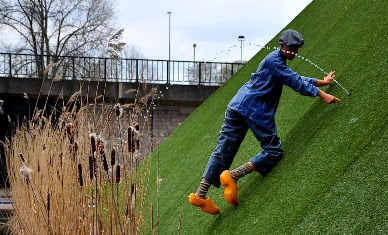When I travel back to the U.S. and meet people from all walks of life, the number one question I am inevitably asked as soon as they hear I live in The Netherlands is: "What's the story of the little boy who stuck his finger in the dike?" It strikes me as sadly ironic that a country producing such well-known brilliance as Erasmus, Rembrandt, Huygens, van Gogh, Vermeer, Rubens, Steen, van Ruysdael, Escher, Mondriaan, van Leeuwenhoek, Corrie Ten Boom, Anne Frank, Andre Rieu and Anouk should be remembered for the poor little boy with his finger in the dyke.
The story of the Dutch boy is actually a story within a story. It can be found in the Mary Mapes Dodge classic Hans Brinker and the Silver Skates, written in 1875. As the story goes, the little boy notices a leak in the dyke and he immediately plugs the hole with his finger, knowing that the one little leak can soon turn into a bigger hole whereby the entire dyke can be breached. If that were to happen, the water would spill into the low-lying countryside, flooding houses and killing people and livestock.
The little boy remains there with his finger plugging the hole all night in spite of the horrible wind, rain and cold until finally some of the townspeople happen to spot him and come to his rescue. They patch up the dyke and the little boy is hailed as the town hero for saving everyone in the county. Although the little boy in the story remains nameless, he is said to represent the will of each and every Dutchman/woman who would sacrifice himself/herself to save others by plugging his finger in the dyke. The author wanted to convey the amazing resolve and honor of the Dutch people in a single metaphor, and it is one that lives on more than a hundred years after her death.

No comments:
New comments are not allowed.